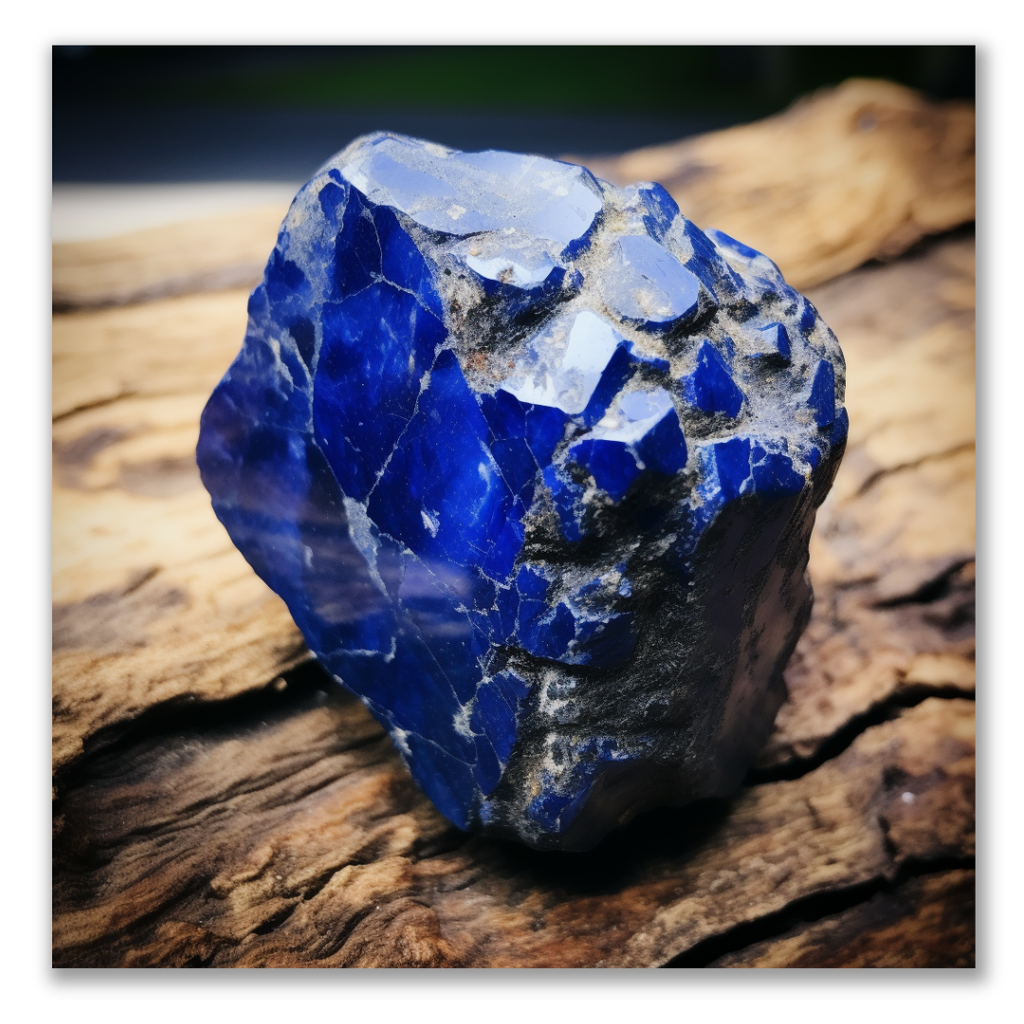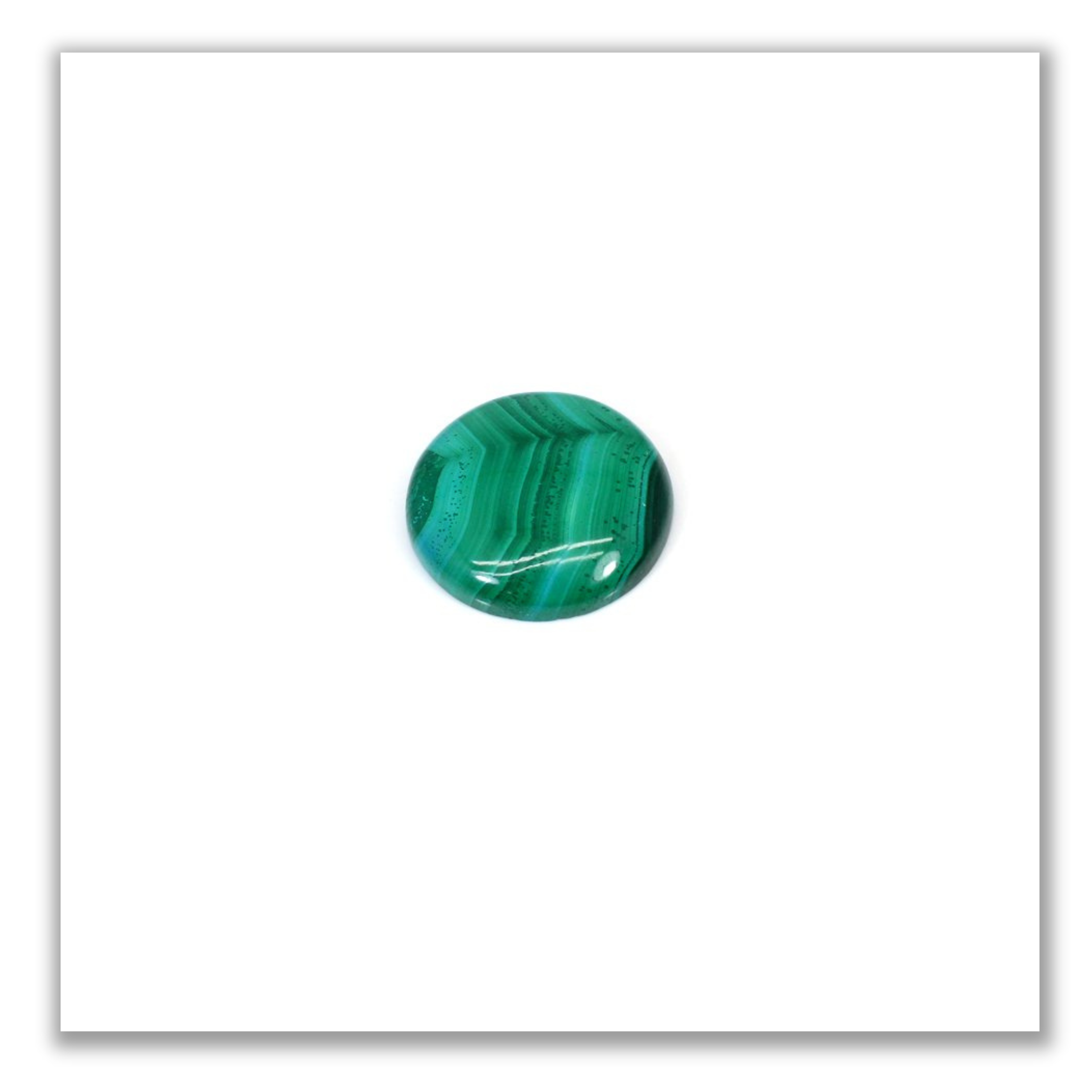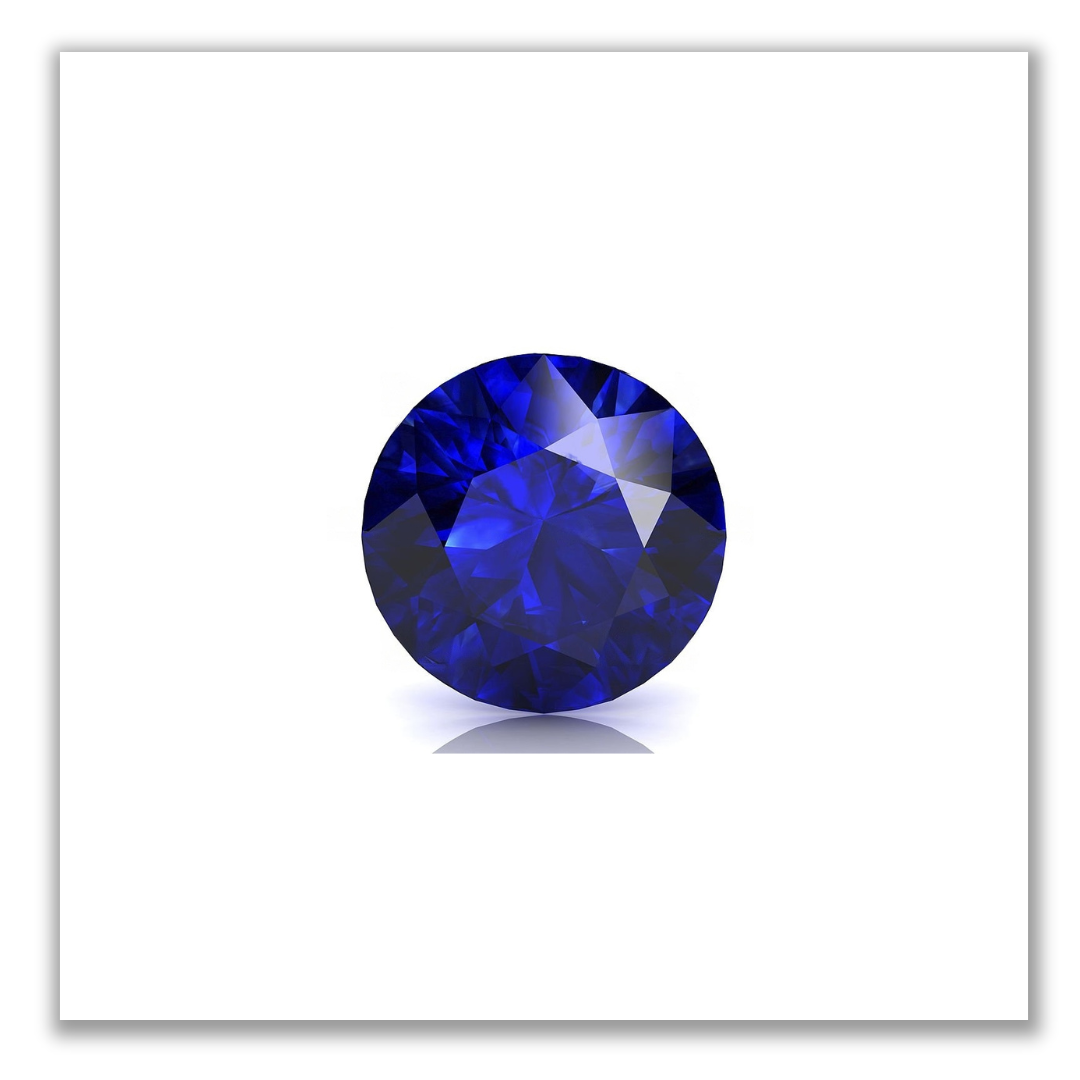The Enchanting Blue Gemstone

History and Origins of Lapis Lazuli:
Lapis Lazuli has a long and fascinating history that dates back to ancient civilizations. It was one of the earliest gemstones to be mined and used in jewelry and art. In this section, we explore the cultural significance of Lapis Lazuli in ancient Egypt, Mesopotamia, and other ancient societies. We also uncover its role in trade along the Silk Road, which facilitated its spread across different continents.
Characteristics and Composition

Lapis Lazuli is renowned for its striking deep blue color, which is often compared to the vastness of the ocean or the night sky. The intensity of its blue hue can vary, ranging from a pale blue to a rich, vivid blue, with higher-quality stones displaying a more intense coloration. One of the key elements responsible for the blue color is the presence of the mineral Lazurite, which is a complex silicate containing both sulfur and chlorine.
In addition to Lazurite, Lapis Lazuli also contains other minerals that contribute to its overall composition. These minerals include Calcite, Pyrite, and small traces of other minerals like Diopside, Hornblende, and Augite. The presence of golden Pyrite specks within the blue matrix of Lazurite is one of the defining characteristics of Lapis Lazuli. These Pyrite inclusions create a dazzling contrast against the deep blue backdrop, adding to its allure and giving the gemstone a distinct, starry appearance.
The composition of Lapis Lazuli can vary slightly depending on its origin, with each source having unique geological conditions that influence its overall mineral makeup. Afghan Lapis Lazuli, for example, is highly esteemed for its intense blue color and minimal white Calcite veining. On the other hand, Chilean Lapis Lazuli may exhibit a lighter blue tone and more prominent Calcite streaks.
To create Lapis Lazuli for commercial purposes, the gemstone is often mixed with binding agents or fillers to enhance its color and stability. While this practice is common, it is crucial to be aware of any treatments or enhancements when purchasing Lapis Lazuli jewelry or artifacts.
The mesmerizing appearance and unique composition of Lapis Lazuli have made it a favorite among artists and craftsmen throughout history. From ancient civilizations to contemporary artisans, the allure of Lapis Lazuli continues to inspire the creation of remarkable artworks and exquisite jewelry pieces that celebrate the beauty of this enchanting blue gemstone.

Symbolism and Cultural Significance

Lapis Lazuli Auction summersplaceauctions.com
Lapis Lazuli has held profound symbolism and cultural significance across various civilizations and time periods. Its rich blue color and golden specks have evoked a sense of wonder and mystery, making it a gemstone deeply revered and cherished by many cultures around the world.Symbolism of the Color Blue
Blue has long been associated with the heavens and the divine. In ancient cultures, the color blue was often linked to the gods and the heavens, signifying spirituality, wisdom, and the infinite. Lapis Lazuli's deep blue hue embodies these symbolic associations, and the gemstone was considered sacred and representative of higher realms.Royalty and Power
Lapis Lazuli's intense blue color also led to its association with royalty and power. In ancient Egypt, for instance, the stone was used in jewelry and burial masks of pharaohs, symbolizing their divine connection and authority. It was believed to offer protection and guidance to the ruler, ensuring their journey into the afterlife.Spiritual Enlightenment and Wisdom
Throughout history, Lapis Lazuli has been considered a stone of spiritual enlightenment and self-awareness. It was believed to stimulate the Third Eye chakra, promoting intuition, inner vision, and deep meditation. In various spiritual practices, Lapis Lazuli was used to enhance one's connection to higher consciousness and to access ancient wisdom.Protection and Healing

Lapis Lazuli was also esteemed for its protective qualities. It was believed to shield the wearer from negative energies, evil spirits, and physical ailments. In ancient times, warriors wore Lapis Lazuli amulets into battle, trusting in its protective powers to keep them safe and victorious.
Communication and Expression
In addition to its metaphysical properties, Lapis Lazuli was thought to enhance communication and self-expression. It was considered a stone of truth, promoting honesty, clarity, and effective communication. Ancient philosophers and orators used Lapis Lazuli to strengthen their vocal abilities and convey their ideas persuasively.Cultural Significance
Lapis Lazuli's cultural significance can be traced back to ancient civilizations like Egypt, Mesopotamia, and Sumeria. It was highly prized for its rarity and beauty, and its use was reserved for royalty, priests, and nobility. Lapis Lazuli adorned ceremonial objects, statues, and religious artifacts, reinforcing its association with the divine and the sacred.Lapis Lazuli in Mythology
In ancient mythology, Lapis Lazuli was often mentioned in tales and legends. In Sumerian mythology, the goddess Inanna was said to have adorned herself with Lapis Lazuli jewelry before descending into the underworld. In Greek mythology, it was believed that Lapis Lazuli brought the favor of the gods and provided protection during long journeys.Modern Symbolism
Even in modern times, Lapis Lazuli continues to be cherished for its symbolic significance. Many individuals wear Lapis Lazuli jewelry as a talisman for spiritual growth, self-expression, and protection. Its historical and cultural associations add an extra layer of meaning, making it a meaningful and sentimental gemstone for many wearers.
In conclusion, Lapis Lazuli's symbolism and cultural significance have transcended time and geographical boundaries. Its captivating blue color, intertwined with spiritual and mystical connotations, has made it an enduring gemstone cherished by both collectors and individuals seeking its profound energies. Whether used in art, jewelry, or spiritual practices, Lapis Lazuli remains a gemstone of profound beauty and meaning, connecting the present to the rich tapestry of human history.

Uses in Art and Jewelry

Lapis Lazuli's exquisite beauty and rich symbolism have made it a sought-after gemstone in the world of art and jewelry. For thousands of years, artisans and craftsmen have utilized this captivating blue gem to create masterpieces that showcase its unique allure and timeless appeal.
5.1 Historical Artifacts

One of the earliest uses of Lapis Lazuli was in ancient artifacts and religious objects. In civilizations like ancient Egypt, Mesopotamia, and Indus Valley, Lapis Lazuli was used to create intricate amulets, beads, and figurines. Its deep blue color symbolized divinity, making it an essential material in religious ceremonies and burials.
In ancient Egypt, Lapis Lazuli was often carved into scarabs, eye-shaped amulets, and other jewelry pieces, signifying protection and eternal life. The famous funerary mask of Tutankhamun, the young Egyptian pharaoh, features vibrant Lapis Lazuli inlays, emphasizing the significance of this gem in the afterlife.
5.2 Renaissance Art
During the Renaissance period, Lapis Lazuli gained popularity among European painters, especially in the creation of ultramarine pigment. The vibrant blue color obtained from ground Lapis Lazuli gemstones was highly valued and used in iconic artworks by renowned painters like Leonardo da Vinci and Michelangelo.
However, the laborious process of obtaining the ultramarine pigment from Lapis Lazuli made it one of the most expensive and prized pigments of the time, often reserved for important commissions and works of religious art.
5.3 Modern Art
In modern art, Lapis Lazuli has continued to inspire artists seeking to add a touch of brilliance to their creations. From delicate Lapis Lazuli inlays in sculptures to stunning jewelry designs, the gemstone's deep blue color and golden specks add an element of luxury and sophistication to contemporary artworks.
5.4 Jewelry

Lapis Lazuli has been used extensively in jewelry throughout history. Its bold and vivid blue color makes it a favored gemstone for necklaces, bracelets, earrings, and rings. In ancient times, Lapis Lazuli jewelry was reserved for royalty and nobility, signifying wealth and prestige.
Today, Lapis Lazuli remains popular in both traditional and modern jewelry designs. Jewelers craft Lapis Lazuli into cabochons, beads, and faceted stones, allowing for a wide range of styles and settings. Whether set in silver, gold, or platinum, Lapis Lazuli jewelry exudes elegance and individuality.
5.5 Carvings and Sculptures

Ornamental plate (lapis lazuli) with Winged Bull, Achaemenid Empire 500-400 BC
The workability of Lapis Lazuli makes it an ideal gemstone for intricate carvings and sculptures. Artisans skillfully carve the gem into various shapes, including animals, deities, and decorative motifs. These sculptures often serve as decorative objects, talismans, or collectible pieces, showcasing the gem's mesmerizing color and mystical allure.
5.6 Inlay Work
Lapis Lazuli is also frequently used in inlay work, where thin slices of the gemstone are set into a contrasting material, such as wood or metal, to create intricate patterns and designs. Inlay work with Lapis Lazuli can be found in furniture, decorative boxes, and architectural elements, adding a touch of opulence and luxury to these objects.
In conclusion, Lapis Lazuli's versatility and captivating beauty have made it a beloved gemstone in both the worlds of art and jewelry. Its historical significance and deep blue color, accented by golden specks, continue to inspire artists and jewelers worldwide, ensuring that this enchanting gemstone remains a cherished favorite for generations to come.

Mining and Sources

Lapis Lazuli has been mined for thousands of years, and its sources are scattered across different regions of the world. The gemstone's geological formation and distribution have influenced its historical significance and trade routes, making it a prized commodity in ancient and modern times.
6.1 Historical Mining
Historically, Lapis Lazuli was primarily mined in the Badakhshan province of Afghanistan, specifically in the Sar-e-Sang mines. The region's rich deposits of Lapis Lazuli have been known since ancient times, and it was one of the most important sources of the gemstone in antiquity. The ancient Egyptians, Mesopotamians, and Indus Valley civilizations relied on these mines for their supply of Lapis Lazuli.
6.2 Silk Road Trade
The allure of Lapis Lazuli was not limited to the regions where it was mined. The gemstone's significance and popularity led to its inclusion in the famous Silk Road trade network that connected Asia with Europe and the Middle East. Along with other valuable goods, Lapis Lazuli was traded across vast distances, reaching far-flung lands like Greece, Rome, and even as far as Egypt and China.

6.3 Modern Sources
While Afghanistan remains one of the primary sources of Lapis Lazuli, other countries have also become important suppliers of the gemstone. Some of the notable modern sources of Lapis Lazuli include:
6.3.1 Chile
Chile is a significant producer of Lapis Lazuli, and its mines yield gemstones with a lighter blue color and distinct white Calcite streaks. Chilean Lapis Lazuli is highly valued for its unique appearance and is often used in jewelry and sculptures.
6.3.2 Russia
Russia's Siberian region is another source of Lapis Lazuli. The gemstones mined in this region typically have a rich, dark blue color, often considered comparable to the high-quality stones from Afghanistan.
6.3.3 United States
In the United States, Lapis Lazuli deposits are found in California and Colorado. While not as abundant as other sources, these mines contribute to the overall supply of Lapis Lazuli in the market.
6.3.4 Other Sources
Lapis Lazuli is also found in smaller quantities in several other countries, including Argentina, Canada, Pakistan, and Myanmar. These sources add to the global availability of the gemstone.
6.4 Mining Methods
The mining of Lapis Lazuli is a labor-intensive process, often involving traditional methods that have been passed down through generations. In Afghanistan, where mining has a deep-rooted cultural and historical significance, the mines are located high in the mountains, and extraction is a challenging task.
Miners use hand tools and explosives to break the rock containing Lapis Lazuli into manageable pieces. The gemstone is then extracted, and the rough stones are transported to processing centers for further evaluation and cutting.
6.5 Ethical Concerns
The mining of Lapis Lazuli, like many other gemstones, has raised concerns about environmental impact and labor practices. Some mines, especially in Afghanistan, have faced issues related to sustainability, fair wages, and child labor. To address these concerns, there have been efforts to promote responsible mining practices and fair trade initiatives in the gemstone industry.
In conclusion, Lapis Lazuli has a rich history of mining and trade, with Afghanistan being its primary historical source. Modern mining activities have expanded to other countries, ensuring a more diverse supply of this enchanting blue gemstone. As the demand for ethically sourced gemstones grows, the gemstone industry continues to work towards sustainable practices to ensure the longevity of Lapis Lazuli's availability in the global market.

Caring for Lapis Lazuli
Lapis Lazuli, like all gemstones, requires proper care and handling to maintain its beauty and durability. With its captivating blue color and golden specks, Lapis Lazuli is a gemstone worth preserving for generations to come. Here are some essential tips for caring for Lapis Lazuli:
7.1 Cleaning
To clean Lapis Lazuli jewelry or artifacts, use a soft, lint-free cloth to gently wipe away any dirt or dust. Avoid using harsh chemicals or ultrasonic cleaners, as they may damage the gemstone or its setting. Instead, you can use a mild soap mixed with lukewarm water to clean the gemstone, but be sure to rinse it thoroughly and pat dry with a soft cloth afterward.
7.2 Storage
Store your Lapis Lazuli jewelry separately from other gemstones and jewelry to prevent scratches and damage. Consider keeping it in a soft pouch or jewelry box lined with fabric to avoid any potential impact or friction with harder materials.
7.3 Protection
Lapis Lazuli is not as hard as some other gemstones, such as diamonds, so it can be more susceptible to scratching and chipping. Avoid wearing Lapis Lazuli jewelry during activities that may subject it to rough treatment or impact. Remove your Lapis Lazuli jewelry before engaging in sports, household chores, or any other activities that may expose it to potential damage.
7.4 Avoiding Exposure
Limit your Lapis Lazuli's exposure to direct sunlight for extended periods. Prolonged exposure to sunlight can cause fading of its blue color over time. Additionally, protect Lapis Lazuli from extreme temperature changes, as this can lead to thermal shock and potential damage.
7.5 Chemicals
Lapis Lazuli can be sensitive to acids and harsh chemicals, so it's essential to avoid exposing the gemstone to household cleaners, perfumes, hairsprays, and other chemical substances. Always remove Lapis Lazuli jewelry before applying any personal care products.
7.6 Re-polishing
If your Lapis Lazuli jewelry starts to lose its luster over time, you can have it professionally re-polished. However, be sure to consult with a skilled jeweler or gemologist experienced in working with Lapis Lazuli to avoid any potential damage during the re-polishing process.
7.7 Regular Check-ups
Periodically take your Lapis Lazuli jewelry to a reputable jeweler for inspection and maintenance. A professional can check for loose stones, damaged settings, or any signs of wear and tear. Regular check-ups can help catch any issues early and ensure that your Lapis Lazuli jewelry remains in optimal condition.
By following these care tips, you can enjoy the beauty of Lapis Lazuli for years to come and preserve its natural allure. Proper care and attention will not only maintain the gemstone's visual appeal but also protect its historical and cultural significance, making it a treasured piece in your collection.

Conclusion
In conclusion, Lapis Lazuli stands as an enduring symbol of beauty, spirituality, and cultural heritage. Its captivating blue color and historical significance continue to enchant people worldwide. From ancient civilizations to modern-day artisans, the allure of Lapis Lazuli remains undiminished, making it one of the most revered gemstones in the world. As we appreciate its timeless charm, let us also strive to preserve and cherish this remarkable gem for generations to come.











